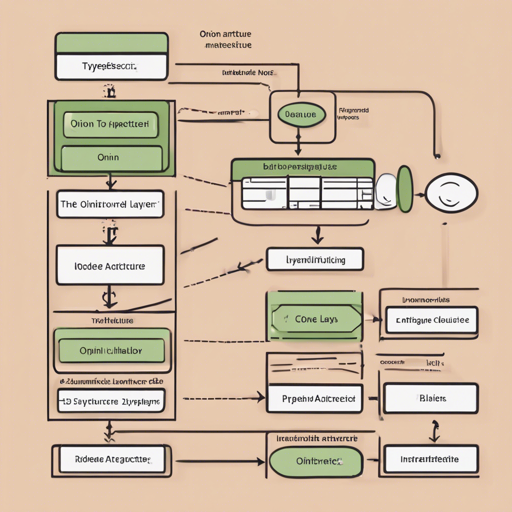Onion Architecture is a design pattern that aims to enforce separation of concerns through layered architecture. In this article, we will explore how to set up a project using this architecture with Node.js, Express, and TypeScript.
Understanding the Basics
Imagine you have an onion; the outer layers are the presentation, the core is the data and business logic, and the innermost part is your storage. Just like each layer of an onion has a distinct purpose, in Onion Architecture, each layer has its own responsibilities, which helps maintain a clean separation between business logic and the outer layers, such as the UI or the database.
Project Overview
This project simulates a warehouse management system, consisting of an Administrative and a Client-facing application. Let’s dive into some user stories to understand how users interact with the system from both perspectives.
User Stories
- Client facing app:
- Account creation and deletion.
- Equipment management and warehouse selection.
- Admin facing app:
- Equipment and warehouse preview and management.
- User management.
Technical Setup
Technologies Used
- TypeScript
- Inversify.js
- TypeORM
- Express.js
- Apollo Server
- GraphQL
- Mocha & Chai for testing
Installation Prerequisites
- Yarn
- NVM (Node Version Manager)
- PostgreSQL
Setup Steps
- Set up your database configurations in
ormconfig.sample.js. - Run
yarn installto install the necessary dependencies. - Start the application with
yarn devto run it in development mode.
Working with the Database
Use the following commands to manage your database:
yarn db:reload– Prepares the database with the latest migrations.yarn db:seed– Seeds the database with initial data for testing.yarn db:generate my_migration_name– Generates a migration script for entity changes.
Testing Your Application
Running Tests
Prepare your tests database by ensuring your environment is correctly set up. Use the following command to execute your tests:
yarn test
Mutational Testing
To perform mutational testing, refer to the guide here.
Troubleshooting
If you encounter issues during setup or execution, consider the following:
- Check your database connection parameters in the configuration file. Make sure the database name and credentials are correct.
- Ensure all prerequisites are properly installed, especially Yarn and NVM.
- If the application fails to run, ensure that the Node.js version is compatible.
- For more insights, updates, or to collaborate on AI development projects, stay connected with fxis.ai.
Conclusion
Onion Architecture allows you to build robust applications by clearly separating the different concerns of your codebase. This layered approach makes it easier to maintain, test, and scale your application. Dive into the code, get your hands dirty, and see how this architecture can streamline your development process.
At fxis.ai, we believe that such advancements are crucial for the future of AI, as they enable more comprehensive and effective solutions. Our team is continually exploring new methodologies to push the envelope in artificial intelligence, ensuring that our clients benefit from the latest technological innovations.

